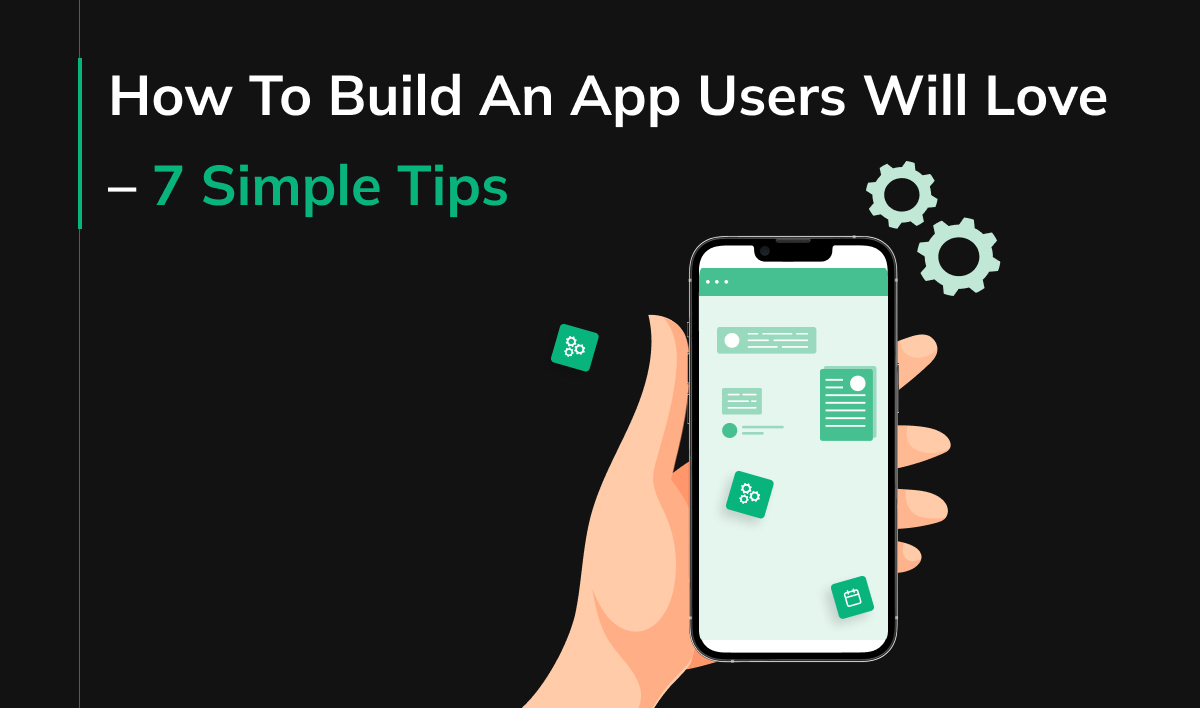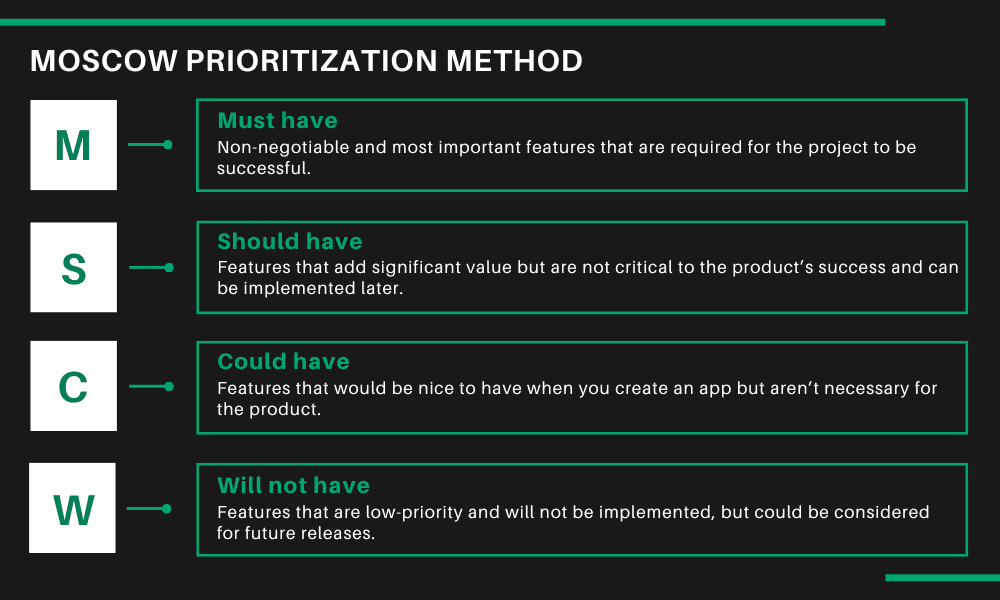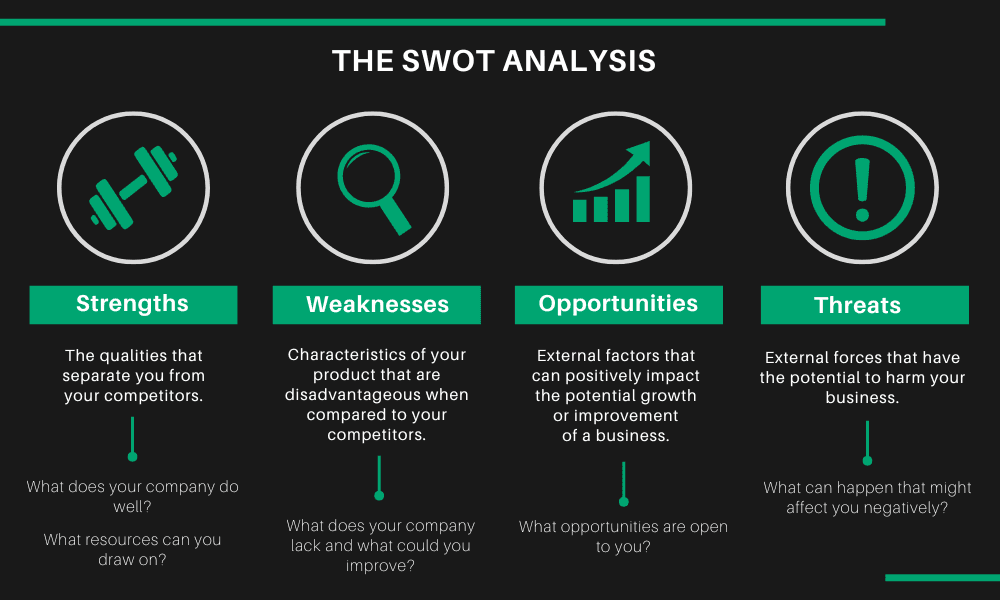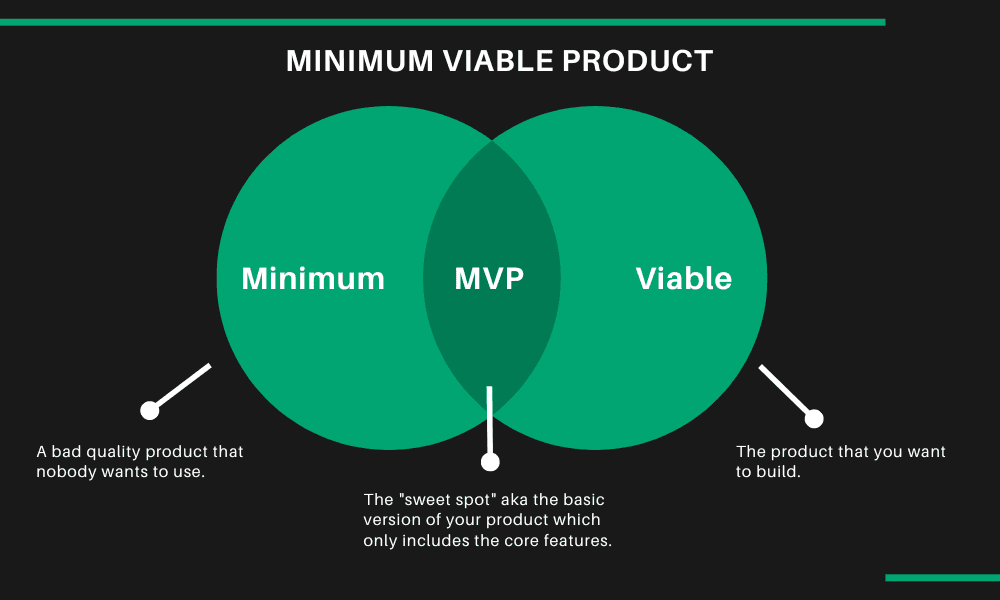How To Build An App Users Will Love – 7 Simple Tips

Creating a successful app is no easy venture, especially if you’re a startup competing with well-known brands in the same niche as yours.
Did you know that the average churn rate for an app is over 70% after a 3-month period? Additionally, we know that the attention span of today’s online users is less than 8 seconds. So how can we ensure that our mobile apps are not only a quality product but also a worthwhile investment for our clients?
As scary as these statistics may be, don’t let that discourage you from bringing that incredible app idea you have in your head to life. After all, we hear many stories of ridiculously successful new products which started out as just concepts.
It may be challenging to build mobile apps that users will actually want. Still, with a good product development strategy and proper planning, you can ensure that you have a higher chance of building an app that will not only satisfy your customers’ needs but leave them impressed and wanting to continue using it.
How can you build a great app that stands out from the rest? We have gathered some valuable tips you can follow from the ideation process, through production and releasing your product on app stores (such as the Apple App Store and Google Play Store) to post-launch. Stick around to learn how to build an app and what could help you achieve your business goals. Here are 7 tips to follow for your app development project!
Tips for building a great app
Understand your target audience
Your clients are the heart of your business, so in order to know how to build an app that fits their expectations, you need to make sure that you understand their point of view and provide what they need. There is no better source of information than the actual users of your product which is why it’s so crucial to listen to them.
To create an app that resonates with your target audience, you first need to study their “pain points” and build a solution to those problems. An essential part of creating mobile apps is conducting user interviews and doing the proper research on your potential clients.
User research involves not only making our own assumptions but also conducting surveys and interviews with the potential app user. This is important not only in the beginning steps of the mobile app development journey but throughout all of its stages (more on that later in the article!).
A great way to gather all of the information about our clients is by creating user personas. These are fictitious characters that represent your vision of the ideal client. They are based on real customer discovery and research you do to gain valuable insights. Here are the questions you need to find an answer to:
- Who are they? (Take into consideration things like age, gender, interests, occupation, income, location, etc.)
- What are they trying to achieve? And what may be stopping them from achieving their goal?
- How are they solving their problem as of today? Can you give them a better alternative?
- How many people are faced with this problem? Is the market big enough to support your business?
- Is there a real need for this product?
- Would people pay money for this product? Are you willing to create a free app that also has a premium paid version or in-app purchases available?
- What would it take for a user to switch over to your mobile app?
- Are Android apps or iOS apps more popular amongst your target audience?
When asking these questions, keep in mind that not all of the collected data will be of use in your app development process. To create an app that is successful amongst its users, remember to focus on understanding the problem of your potential clients, not their suggestions for the solution. Of course, your audience understands the problems that they face but may not be aware of the range of possibilities that can provide a solution to them. Henry Ford himself once quoted: “If I had asked people what they wanted, they would have said faster horses.”
After doing comprehensive research and empathizing with your end-users, you can proceed to identify the challenges they face and determine what would work as a solution for them in your own app that you create.
Learn to prioritize
As emphasized in the point above, your product should be centered around the user. Put yourself in the customer’s shoes throughout the entire app-building process and focus on their point of view rather than your own. The possibility of bringing an idea to life and creating an app is as exciting as it gets, but don’t let your passion for the product blind you to its flaws and imperfections. Maintaining a sense of objectivity means that you have to be open to new concepts and suggestions. Be an avid user of your own app and recognize the problems that appear as well as the ways you can improve.
The second most important thing after the user should be the service or product you’re offering. If you want to create an app that delivers professional services or a good quality product, you need to find the right strategy. Learn about product management frameworks and align your chosen strategy accordingly to your needs. Create a list of elements that are most important to you and keep track of KPIs. This will help you stay organized and plan realistic goals.
An example of a product prioritization framework is the MoSCoW method which is used to figure out what matters most and decide which features should be prioritized.
This method groups initiatives and features into 4 buckets which make up the acronym:
- Must have (Mo) – features that are most important and required for the project to be successful. For example: the app MUST have a sign-up page.
- Should have (S) – features that add significant value but are not critical to the product’s success and can be implemented later. For example: the app SHOULD have the possibility to import contacts.
- Could have (Co) – features that would be nice to have when you create an app but aren’t necessary for the product. For example: the app COULD have a time tracking feature.
- Will not have (W) – features that are low-priority and will not be implemented but could be considered for future releases. For example: the app WON’T have a visual theme customization feature (yet!)

This prioritization method is an easy way of communicating priorities (to all of the people involved in the project, even those without a technical background) and helps with gaining clarity when ranking different requirements based on their importance. To learn more about this methodology check out our MoSCoW Method blog post which explains everything in more detail.
Do market research & competitor analysis
To outperform your competitors, you should aim to create an app that’s not only on par with their solutions but offers additional advantages or improvements, whether that be through better usability, increased speed, or handy new features. Just like the analysis of your target audience, it’s vital to do thorough research on your competitors.
What are the alternatives for your app? What features do they offer? What operating system do they use? In which app stores is the product available? Many products are available as both Android apps and iOS apps. Is there anything that frustrates the users that you know you could do better in your own mobile app? These are some of the questions you need to ask yourself to get a better understanding of the expectations of your potential clients.
It will also help you understand which areas to improve in your own app. Determining your USP (Unique Selling Point) is an essential factor in setting your business apart from the rest and creating an app that gives your clients a reason to come back to your product.
There are many methods and techniques that help you identify where you are currently placed in the app ecosystem – one of them is the SWOT analysis.
SWOT stands for Strengths, Weaknesses, Opportunities, and Threats and is a framework that is used to assess these four aspects of your business. This analysis matrix lets us recognize the advantages we have over our competition and potential business issues that need to be addressed when we create apps.
Here is a quick breakdown of the components of the SWOT analysis:
The SWOT analysis
Strengths
- The qualities that separate you from your competitors.
- What does your company do well? What resources can you draw on?
Weaknesses
- Characteristics of your product that are disadvantageous when compared to your competitors.
- What does your company lack, and what could you improve?
Opportunities
- External factors that can positively impact the potential growth or improvement of a business.
- What opportunities are open to you?
Threats
- External forces that have the potential to harm your business.
- What can happen that might affect you negatively?

To achieve the best results with this analysis, gather a group of people with different perspectives on the project and listen to their opinions. By selecting a range of people with varying points of view, you can gather plenty of insightful data. These observations will help you take your first steps in crafting a business plan for your app-building journey.
Focus on solving one problem
Don’t go overboard with trying to do everything at once. When starting out with your own app, it can be easy to envision your product in its future innovative state with a long list of features. While having an ambitious plan is great, building a complex mobile app from day one is not only challenging to implement but can ultimately even be the cause of failure and wasted resources and efforts. Going for a step-by-step approach is the most beneficial way of building a successful product.
Start by defining which features of the app are the most important. Divide your ideas into two categories:
- elements that are an essential part of your product
- features that would be nice to have but aren’t pivotal or necessary for the app to fulfill its purpose
Building the MVP
After deciding on which features should be included, you can build the first version of your product which has just enough functionality to solve the user’s core problem. This basic version of your product is known as the MVP (Minimum Viable Product), and its primary purposes are to gauge user demand and validate your idea early on in the product development process.
There are countless examples of startups who started out by launching an MVP before eventually building their way up to the ultimate versions of their products. Some of the big names include Airbnb, Dropbox, and Uber, just to name a few. Starting from a basic version of your product and gradually changing it going forward has proven to be an efficient approach. After all, no one wants to place their bets on creating a full-blown product only to discover that the idea wasn’t quite right. The minimum viable product is, therefore, the perfect solution for businesses that are just starting out and have a lean budget to work with.
Remember that basic does not mean low quality. It simply means that the main focus should be the feasibility of the app and the core features. We shouldn’t skimp on quality and neglect the “viable” part of the MVP, so it’s good to always keep in mind the usability, and the customer needs and expectations.

Tools for app building
When it comes to building apps, there are many options for you to choose from. The way you could approach building an MVP is through hiring app developers or considering a low-code or no-code app maker. Modern tech tools have made it possible to build apps without coding skills or any programming language knowledge, opening up the opportunity to help startups that struggle with limited time and budget to build an app without a single line of code. How do these app maker tools stack up against custom development? To decide which of these options would be more appropriate for your app development process, you need to determine which elements of the app are most important to you. Is it possible to achieve your desired solution through an app maker that doesn’t involve coding? Or should you opt for bespoke development, which allows you to develop unique software programs for your business needs? Below you will find some of the pros and cons of no-code app building tools.
The benefits and downsides of a no-code app maker
The pros:
- Affordability – app building tools allow you to create an app inexpensively compared to the cost of custom development services. Since no-code development doesn’t require as much time and skills as manual coding, the expenses are significantly lower, which makes this a good option for startups with limited funds.
- Time & increased productivity – speed is one of the most important things to consider, and no-code tools give you the possibility to deliver your product within a short period of time. Building an app using these tools would be a matter of hours instead of weeks or months compared to manual app development. This, in turn, will allow you for quicker completion and marketing of your project.
- No technical skillset is needed – most of the available no-code tools have a steep learning curve and use the drag-and-drop interface as well as the option of building using pre-built modules. Apart from that, there are usually plenty of online tutorials available for you to follow to gain a better understanding of how these tools work. This allows for easy customization and implementation of quick changes without any technical experience.
The cons:
- Limited customization – although no-code app development platforms offer a wide variety of templates, you are still restricted to using only the given features and components. As much as this shouldn’t cause a problem in developing a simple app, it may be inconvenient when you need to solve an issue strictly related to your custom product. Traditional development gives you the opportunity to address those problems by providing the required tailor-made solutions, as programmers can modify and improve your app according to your needs.
- Security issues – an important thing to remember is that no-code apps rely heavily on their platform providers, and you don’t have total control as you would with custom development. If the platform gets hacked or suffers from a security breach, you are left in a vulnerable position and faced with certain risks.
- You don’t own the source code – as mentioned in the point above, choosing a no-code app maker is tied to being highly dependent on its platform provider and results in vendor lock-in. This makes it difficult to switch to a different platform and also means that maintenance and updates are in the hands of your current provider.
There is no doubt that no-code app development has much to offer and is a great opportunity for startups on a tight budget seeking to build a simple app using an intuitive interface in a short amount of time. However, taking the path of traditional development gives you more flexibility and offers better customization options. Both of these options have their own benefits, but the ultimate decision on which solution is best for you depends on the objectives and needs of your business.
No matter which option you decide to go for, launching an MVP is a great way to validate your idea and make sure you’re on the right track before you put in the resources needed to create your final version of the product. Once you have perfected the most important elements of your mobile app, you can continue adding new exciting features.
Keep it user-friendly
As the creator of the mobile app, you will have a solid understanding of how your app works. But your clients won’t, so you will need to make sure the interface is designed in a user-friendly way. Although it might be tempting to try something completely new, you should avoid reinventing the wheel and going against the fundamental UX design principles. To be certain that you deliver a delightful experience to the users, there are some universal rules you must adhere to when building your mobile app, such as:
- Having consistent design components throughout your entire product – for example, sticking to the same color palette and using the same buttons. It’s important to create a user interface that lives up to the standards of other apps available in app stores.
- Meeting app users’ expectations by giving them popular app features that they are already familiar with, thanks to similar mobile app designs. For example, when a user downloads an app from the Apple App Store or Google Play Store, they have some assumptions from the get-go about how the mobile app is going to function. Most people will already know that a magnifying glass symbol provides them with the possibility to search for something, so that’s what they will expect coming into your app. By following user experience patterns and focusing on an intuitive design, we reduce the learning curve for our users and make it easier for them to understand our product.
- When you’re at the design stage of your mobile app development journey, go for a simple and clean app design instead of cluttering the user interface with unnecessary elements – remember that less is more!
- Keep things speedy – the ideal loading time shouldn’t take more than 3 seconds. Making your users wait too long for a response can leave them frustrated and quickly lose interest.
- Consider multiple screen sizes and operating systems – create an app with a responsive design that adapts to the different mobile devices.
Creating a great user experience should be one of your main priorities when you set out to build an app. The user interface (UI) and user experience (UX) are one of the most important aspects to consider in the app development process. A bad UX can cause users to lose interest in your app quickly and can even lead to negative reviews, which could affect the success of your mobile application.
So what are user-friendly apps? Simply put, a user-friendly product focuses on the user and satisfies their needs and wants, all while providing a pleasant experience. To create an app that is satisfying and easy to navigate by the app users, we must consider things like app design and a friendly user interface.
Build, test & improve
Let’s imagine that you have an interesting idea and are eager to build a mobile app. You get excited and can already visualize how the features would work. But what if your app ideas are wrong? Maybe you’ve misjudged the financial possibilities, chosen the wrong target audience, or are unsure of which app development platform to go for. We can make assumptions about what we think would work when we want to create an app, but we can only learn the truth through trial and error.
Developing a perfect product on the first try is close to impossible, and mistakes and errors are bound to happen. The key is to put your focus on developing a minimum viable product in order to test its usability and gain a better understanding of what needs to be modified. With this approach, you can find out how your product will perform and what it is lacking in a quicker and more affordable way.
Testing the prototype with the users allows us to collect user feedback and gather the necessary data that will help us address any issues that may arise. Usability tests give us tremendous insight into how the average person understands our product and give us the opportunity to learn how we can refine it in its next version.
Analyzing and measuring all of your findings and results can prove to be extremely valuable for figuring out what adjustments need to be made to move forward. It can also be a deciding factor in determining whether the product is good enough or if it’s time to try something different. By iterating this process, we can optimize our mobile app according to the user preferences and slowly but surely get closer to our ultimate version of the product.
Undoubtedly this is the time-consuming part of the app development process, but it will increase your chance of success and ensure that you deliver and create an app that meets the user’s expectations.
Collect feedback & provide excellent customer service
Launching your app
Once your product is ready for the final launch, you can release it to a wider audience and promote it using various app marketing strategies. When your app is completed and ready to be released, you can launch it in different app stores, such as the Apple App Store and Google Play Store. Most applications are available both for Android and iOS users, so when you create an app, it’s good to consider both operating systems.
You may think that this is the last step of your mobile app development process. However, the product lifecycle doesn’t end on the launch of your app on different app stores. The next step you have to focus on is collecting user feedback and, based on the acquired data, continue upgrading your app.
Now that your potential clients have access to your product be sure to follow up on all of the reactions and collect any feedback that comes your way. Keep in touch with your app users and check for complaints and reviews of your product to make sure that there aren’t any issues that you may have initially missed.
Make incremental improvements
Find out if there are any bugs that need to be fixed or any app design issues that need to be resolved. Apart from that, conduct surveys, and spark up a conversation on social media platforms – to put it simply, obtain as much information as you can from your app users and learn how you can keep making further improvements.
Make sure that your users know that they are being listened to and that their opinions matter. Provide exceptional customer service and always reply to any queries that your clients have. Being close to your customers and responding to their needs will help you take appropriate actions to enhance the user’s experience, not to mention build a good reputation for your business.
Remember that with time your users’ needs and expectations will change, so you need to make sure that you adapt to those changes by updating the mobile app and staying on top of the latest technology trends. Make sure you don’t fall behind on any cutting-edge developments made in your industry.
- Is your product social media friendly?
- Does it offer in-app purchases and use well-known and secure payment methods?
- Does it have the option to store data in the cloud? Are the most common app features available?
- Is there a possibility to collaborate with other users of the app?
- Is the mobile app design modern, and is the app functionality user-friendly? Does it adjust to multiple screen sizes and mobile devices?
By following these steps, you can ensure that you’re offering reliable and up-to-date mobile apps to your users. Nowadays, customers are more tech-savvy than ever, and recognizing an outdated mobile application won’t be too difficult for them. Build a product that won’t disappear with time so that your customers don’t abandon your mobile app for a superior alternative on the market. Follow trends, use analytics to measure your app’s performance, make tweaks and adjustments and add new features to keep providing a great experience for your users.
By keeping pace with the most recent changes, you are showing your customers that your business is modern and constantly evolving in order to provide them with not just a good product but a great one!
Conclusion
Today’s extremely competitive market may cause difficulty in app creation and introducing mobile apps that will excel in their niche and be loved by their users. In the face of all the challenges that we come across, it can be easy to feel intimidated or overwhelmed. Fortunately, if you are aware of the possible obstacles and are well prepared, you can significantly improve your odds against failure and bring your mobile app idea to life.
In order to confidently make your way to creating a successful app, you cannot just rely on guesswork and wishful thinking. Sometimes we can be too focused on product building that we neglect some other equally important factors that can significantly impact the project.
So exactly how difficult is it to make an app? To create mobile apps that will stay in this highly saturated market, we must take into consideration all of the aspects of the process. The app creation journey includes doing your due diligence through analyzing your competitors and potential app users, as well as gaining knowledge in strategies and understanding the reasons behind certain app design principles.
At the end of the day, building the mobile app itself is just the tip of the iceberg. We have to remember that creating an incredible user experience is an ongoing process that involves keeping up with user feedback and continuously working on new development phases.
Hopefully, this guide helped you learn a few things about how to make an app that users will love and come back to. Below are some key takeaways from this article that will help you in pursuing your app ideas:
- Understand your target audience
- Learn to prioritize
- Do market research & competitor analysis
- Focus on solving one problem
- Keep it user friendly
- Build, test & improve
- Collect user feedback & provide excellent customer service
Developing a mobile app from scratch can be a complex task but also an excellent opportunity for your business to break into this ever-growing field. The number of users of mobile apps will only continue to increase with time, and there are so many unexplored areas that you could tap into.
Find the right people to help you
Since mobile app development is not dependent on a single factor but a combination of multiple areas and a well-crafted plan, it might be a good idea to leverage the expertise of professionals in a given field. You don’t have to be an app developer or expert in any of the areas mentioned in this article to make an app that users will enjoy.
Collaborating with the right team and getting the help and support of people who have the necessary skills, knowledge, and experience means you are not left alone with the entire app development process of putting together a great product. Working with experts will ensure that you can make the best decisions regarding the choice of an app development platform, the operating system, and app-building software tailored to your expectations and needs, as well as minimize the risks of your product failing.
Have you got an awesome app idea? Or maybe you’ve already begun the first phases of your app development project but are stuck and don’t know which direction to head in? Or perhaps you simply want to ask a few questions and get advice on a particular topic related to app development. If you’re on the lookout for an app development company, our experts can help you with bringing your app idea to life and create a product that users will love!
Don’t hesitate to reach out to us and book a free consultation call to see what we can do for you!




